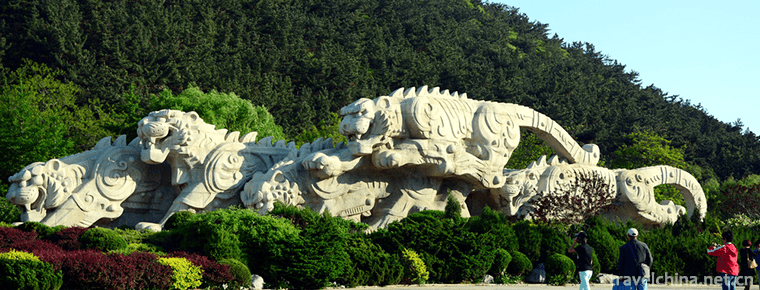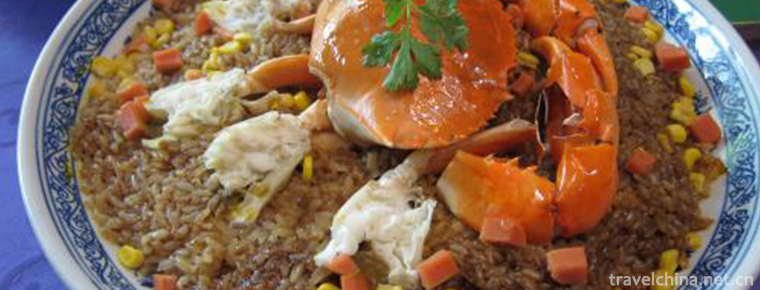Scientific research on Chengdu Giant Panda Base
Scientific research on Chengdu Giant Panda Base
Overview of scientific research
As of 2016, it has undertaken one national major basic research project (former "973" project), one national "Tenth Five Year Plan" high technology research (863 plan), several provincial, ministerial and municipal scientific research projects and Chengdu Giant Panda Breeding Research Foundation scientific research projects. More than 70 scientific research projects have won national, provincial and municipal technology invention awards and science and technology progress awards, It has obtained 14 national invention and utility model patents.
research findings
Research Award
According to the information on the official website of the base in May 2017, the base has achieved 8 national scientific and technological achievements, 26 provincial and ministerial scientific and technological achievements, and 32 municipal scientific and technological achievements. It has successively published 18 monographs, including research on reproduction and disease of giant panda, reproductive physiology and artificial reproduction of giant panda, and ex situ conservation of Giant Panda: Theory and practice, and published papers in major international and domestic journals More than 400.
Panda Breeding
In 1987, on the basis of 6 sick and hungry giant pandas rescued from the wild, Chengdu base successfully bred 62 fetuses and 88 cubs, with 54 cubs surviving; the number of captive giant pandas increased from 8 in 1991 to 47 in 2005, which is one of the main export units of giant panda in China.
Cooperation and exchange
As of 2016, Chengdu base, IUCN, WWF and other conservation organizations, as well as genome diversity Laboratory of National Cancer Research Institute of the United States, National Zoo protection and research center of schmisanlin, East Bay Zoo Association of Oakland, Manchester Zoo Association of the United Kingdom, University of Liverpool of the United Kingdom, Keio University of Japan and Nihon University The University of Queensland in Australia, Samsung agricultural park in South Korea, Madrid zoo in Spain and other relevant institutions in 12 countries have established cooperative relations, forming an extensive international research network platform. Since 1989, in cooperation with the conservation and reproduction expert group of the International Union for nature (CBSG), it has successively sponsored international academic training activities such as "training course on Gene Resource Bank of endangered animals", "veterinary training course for feline animals", "training seminar on population genetic management", "training course on endocrine non-interference reproduction of giant panda", etc. Since 1994, we have carried out a 10-year cooperative breeding research on giant panda with the Baibin wildlife park of Japan, during which 4 cubs have survived in Japan; since November 1999, we have cooperated with Atlanta zoo in the United States to carry out a 10-year research on giant panda breeding, and successfully bred two cubs.
Breeding cooperation
Scientific research cooperation
Since 1989, the base has successively organized and hosted the annual meeting of the Giant Panda Breeding Technical Committee, an important international academic seminar in the field of giant panda protection.
From 1998 to 2000, we organized three "biomedical inspection activities for giant pandas"; from 1998 to 2009, we carried out 10 technical trainings, including "comparative study on cryopreservation methods of giant pandas", "paternity identification of captive giant pandas", "Research on microsatellite technology of giant pandas", "sampling of feline animals" and "training seminar on genetic management of captive giant pandas".

Scientific research on Chengdu Giant Panda Base
-
Dalian Laohutan Ocean Park
Dalian Laohutan Ocean Park is located in the middle of the southern coast of Dalian, a national scenic spot. It covers an area of 1.18 million square meters
Views: 289 Time 2018-12-02 -
The Great Wall Site of Qin Dynasty in Ningxia
The site of the Great Wall of King Zhao of Qin Dynasty was built in the twenty-fifth year of King Zhaoxiang of Qin Dynasty (272 BC). It was built to defend against the invasion of the Huns in the sout
Views: 136 Time 2019-02-07 -
Babao Green Crab Rice
Two crabs, 700g, 165G glutinous rice, 45g ham, 20g open onion, 45g white fruit, 75g peanut, dried mushroom, dried asparagus, onion, ginger slices, yellow wine, salt and clear soup (300g)
Views: 378 Time 2019-03-26 -
Laiwu Bangzi
Laiwu Bangzi, also known as Laiwu Bangzi, is a unique opera in China. It has a history of more than 200 years and is a wonderful flower in traditional Chinese local operas.
Views: 318 Time 2019-05-10 -
April Eighth Girls Day of Miao Nationality
"Girl's Day" originated in memory of Yang Bamei, a heroine. Legend has it that in the Northern Song Dynasty, Yang Wenguang, a famous general, was ordered to be plain and barbarous. After def
Views: 210 Time 2019-06-05 -
Construction Techniques of Traditional Residential Buildings in Southern Fujian
South Fujian residential building technology is a unique traditional architectural technology originating in Quanzhou, which began in Tang and Five Dynasties, is the mainstream of ancient architectura
Views: 166 Time 2019-06-05 -
Qiang sheepskin drum
Sheepskin drum dance, known as "Monasha", "Moldasha" or "Buzila" in Qiang language, is a kind of sacrificial dance performed by "Shibi" in legal activities, als
Views: 200 Time 2019-06-10 -
Xiabaoping Folk Stories
There are many original ecological works of Xiabaoping folk tales, which have distinct local characteristics and high cultural taste. It is the epitome of the traditional folk literature in the Three
Views: 358 Time 2019-07-01 -
Xiushan Festive Lantern
Xiushan lantern is an important school of lantern art in southwest China. It is a folk cultural phenomenon and folk performing art that integrates religion, folk custom, singing and dancing, acrobatic
Views: 92 Time 2019-07-08 -
Gong Shuban Lu Ban
Luban (507 BC - 444 BC), Lu people in the spring and Autumn period. Ji surname , a two-character surname Name, class, person. Public transport plate , Public like , Class lose It is also known as &quo
Views: 213 Time 2019-09-07 -
History and culture of Mianyang
Located 47 kilometers south of Santai County, Qijiang ancient town was once the capital of Qi state during the spring and Autumn period and the Warring States period. Every year on the 27 to 28 May of the lunar calendar, all the male and female believers around
Views: 237 Time 2020-12-14










